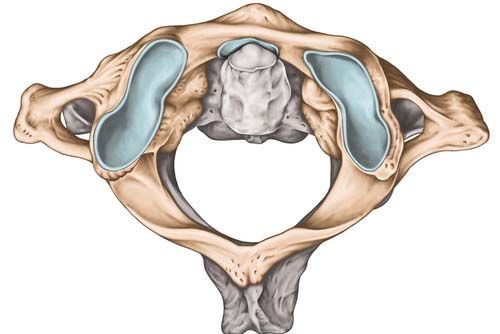Today, I want to talk to you about cranial nerves. I’ve had some questions recently on why, when we take the pressure off the brain stem, do things just work better? We know in upper cervical care, our results speak for themselves, but we need to back it up with science, and that is what I’m going to do for you today. I’m going to give you lots of vocabulary and lots of science, so we can show you exactly why upper cervical care works. Cranial nerves 3 through 12 come right off the brainstem. The brainstem in a living person comes all the way down to the second bone in the neck. The top two bones in your neck are the atlas and the axis. Since the cranial nerves come off of the brainstem, when we take the pressure off of the brainstem due to an upper cervical misalignment, we can see things improve.
Cranial nerves three, four, and six are the oculomotor nerve, trochlear nerve, and abducens nerve, respectively. These are all nerves that innervate the muscles of the eyes. People with ocular dysfunction, for example, may have interference to one of these nerves. Maybe you see a child and they have what’s called a lazy eye. When we take the pressure off the brainstem, we relieve those nerves to the eyes and the eye muscles, and thus, the eye muscles start to work better, and we see the ocular dysfunction go away.
Cranial nerve number five is the trigeminal nerve. The trigeminal nerve has three branches that come across the face, and when we see pressure on the trigeminal nerve, we see something called trigeminal neuralgia – a very, very serious pain condition that has been dubbed the suicide disease. However, when we take the pressure off the brainstem, we see amazing results with those who experienced trigeminal neuralgia.
Cranial nerve number seven is the facial nerve. This nerve controls the muscles of the face. Maybe you’ve seen someone with a condition called Bell’s palsy. Bell’s palsy is a condition where the facial nerve isn’t working properly, so half of the muscles of the face just aren’t working. You will see a drooping eyelid, or the patient can’t smile properly. If you’ve seen a stroke victim before, this is similar to what these people look like.
Cranial nerve number eight is the vestibulocochlear nerve. “Vestibulo” means balance and “cochlear” means hearing. People who suffer from vertigo, hearing loss, or hearing dysfunction in general and Meniere’s disease may have interference to this nerve. When we can take the pressure off the brainstem and restore the flow of the vestibulocochlear nerve, we see these conditions go away.
Cranial nerve number nine is the glossopharyngeal nerve. This nerve basically innervates the tongue and the throat, and it’s involved with taste and swallowing.
Cranial nerve number 10 is the vagus nerve. This is the longest cranial nerve in your body. It actually goes all the way down to your gut tract. That’s why when we take the pressure off the brainstem with someone who may have interference to their vagus nerve, we see digestive issues go away. We see heart rate improve; we see breathing issues improve, because the vagus nerve innervates all of these organs. It has a big job with the parasympathetic nervous system, which is the rest and digest part of the nervous system.
Cranial nerves number 11 and 12 innervate muscles of the tongue and the neck. Cranial nerve number 11 is called the spinal accessory nerve. It innervates our sternocleidomastoid muscles and our traps. Patients who experience upper back pain, neck pain, they can’t turn their head very well, and/or they get muscle spasms in the neck likely have interference to this nerve. When we can take the pressure off the brainstem, thus restoring the flow to the spinal accessory nerve, we see this type of condition improve. Cranial nerve number 12 is the hypoglossal nerve. It innervates the tongue, so if the patient can’t move their tongue properly, or they have dysfunction with their tongue, it is likely this nerve is not working properly. We take the pressure off the brainstem and things just work better.

